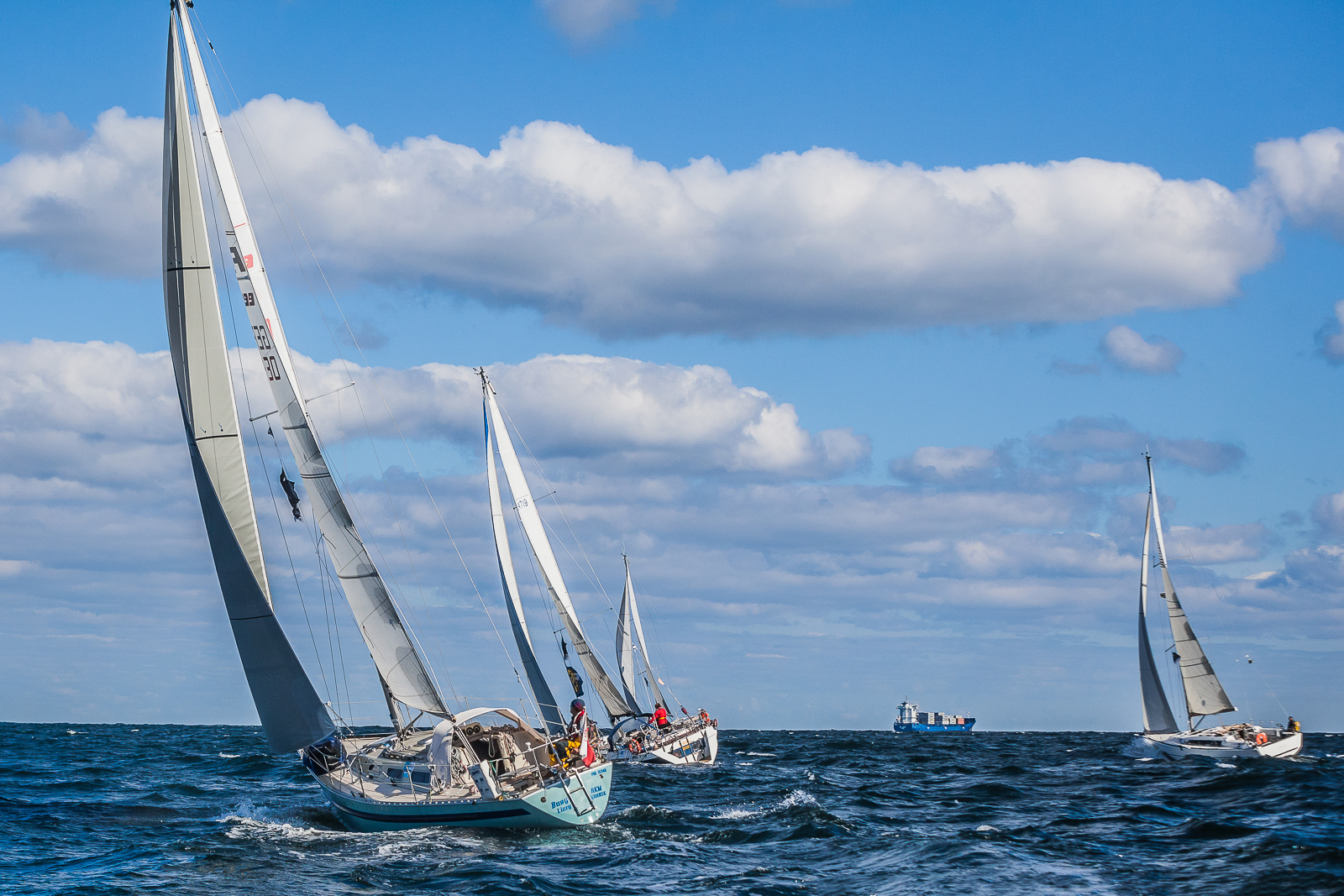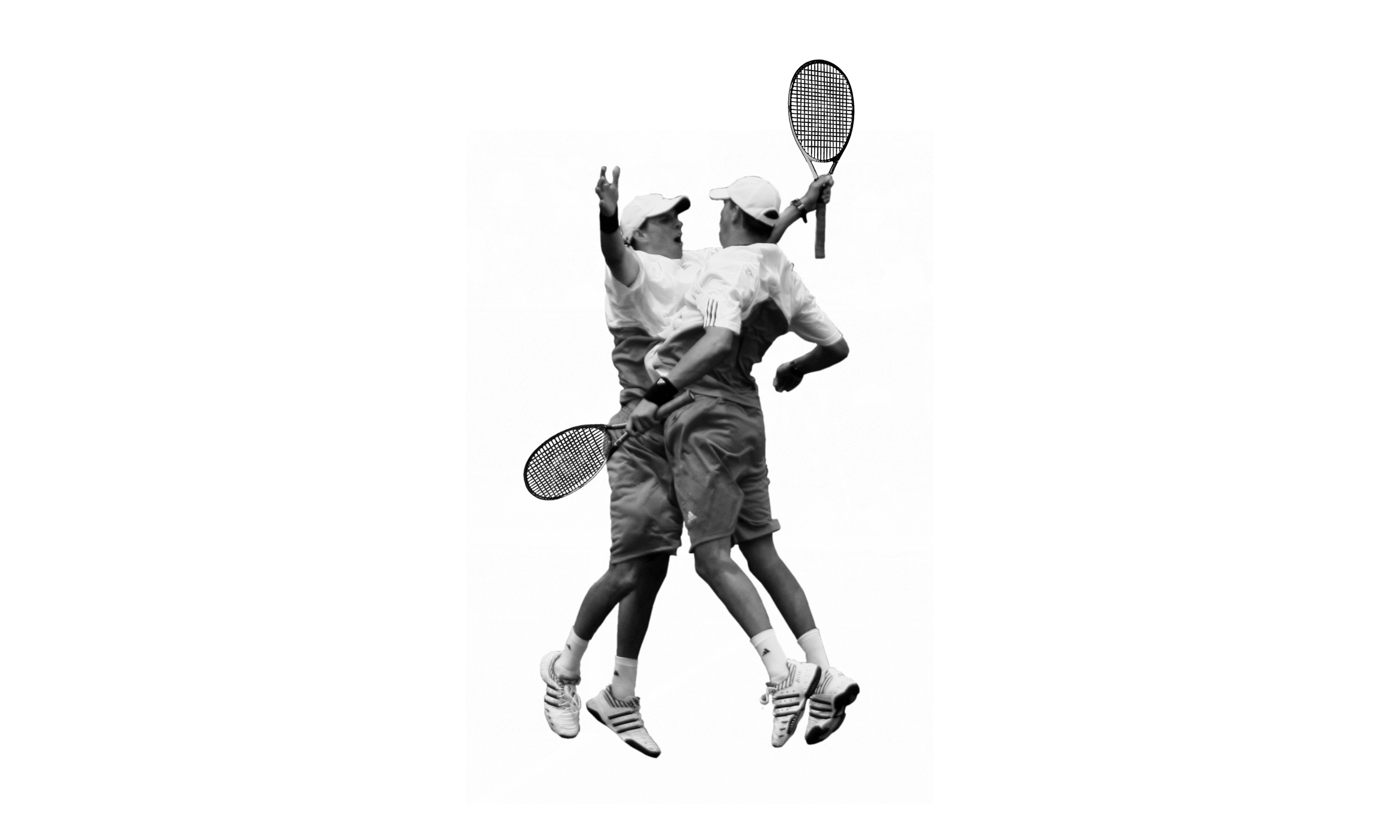
The most difficult challenge that sailors face today are solo races. Conquering the seas and oceans, reliant on their skills, they fight not only the forces of nature, but also their own physical limitations. The best of them dream of entering the legendary Vendée Globe. Others look towards the adventure of a lifetime: taking part in The Great Sailing Battle of Gotland, recognized as the most demanding race on the Baltic Sea.
Everest on the ocean
Single-handed sailing is not for everyone. In the 2018 Golden Globe Race, one of the competitors – who had summitted Mount Everest three times – pulled out after two weeks’ sailing. “I’m not cut out for solo sailing”, said the Australian, Kevin Farebrother, explaining his decision. “For me it is like getting into the back seat of a moving car to sleep when no-one is at the wheel. As a result, I’ve had very little sleep over the past two weeks… My boat is now for sale!”
The race took place on the 50th anniversary of the legendary Sunday Times Golden Globe Race. The competitors were restricted to sailing only with equipment that was available to Robin Knox-Johnston, who won the race back in 1968 – this meant no GPS, satellite telephones, or access to radar systems.
In contrast, the yachts that enter the so-called “Everest of the seas” – the Vendée Globe – are the most modern boats in the world, stuffed with electronics and built for one purpose alone: to circumnavigate the globe as quickly as possible. Thanks to technology, the current record is 30,000 nautical miles in 74 days. The Vendée Globe takes place every four years, and the very fact of qualifying for the race puts a captain among the world’s elite skippers.
Across the Atlantic to the Baltic
The idea of organizing a single-handed sailing race on the Baltic Sea that would meet the criteria to allow qualification for the world’s greatest sailing races emerged during another edition of one of the great races: the OSTAR (Original Single-Handed Trans-Atlantic Race). In order to enter the 3000-nautical-mile race from Plymouth (UK) to Newport Rhode Island (US), sailors must have completed a qualifying passage of not less than 500 nautical miles. Captain Krystian Szypka decided that he wanted to take part in OSTAR 2013. So, in order to secure in advance the necessary qualifying passage, together with Radek Kowalczyk and Jacek Zieliński, he organized a race around Gotland, the largest island in the Baltic Sea.
Only two yachts took part in the first edition of ‘The Battle’. Szypka sailed from Świnoujście and Zieliński from Gdańsk – two cities on opposite sides of Poland – thus it was billed as a confrontation between East and West. During the race, the sailors had to deal with two powerful storms, as well as numerous technical problems. After four days of single-handed sailing, both yachts sailed almost simultaneously into the Bay of Gdańsk to cross the finishing line. The race ended in a historic tie. Szypka fulfilled the criteria and qualified for the transatlantic race, and the Polish sailing community got itself an annual, professional regatta for solo sailors.
Start
The Great Sailing Battle of Gotland traditionally takes place in September. Last year’s edition saw 23 male and female skippers present themselves for the briefing at the Marina Przełom harbour. Since 2014, the race has started and ended in the same place. From Górki Zachodnie the boats sail into the Bay of Gdańsk, and at 12 o’clock sharp the race begins. The sailors head north towards Gotland, sailing around it clockwise (i.e. starboard to the island) and returning to port. During the race, only the skipper can be on the yacht, and he or she must complete the 500 nautical miles course unaided, with no external support. The race usually takes three to four days, and the current record of 62 hours and 15 minutes is held by Szypka.
The majority of boats taking part in ‘The Battle’ are yachts between 11 and 12 metres long, but there are always some brave souls who sail a 6.5-metre Mini 650. When faced with a bigger wave, this smaller yacht can turn the race into an extreme sport for its sailor. The most important thing is that the skipper knows the boat and is confident that they are up to the task. Of course, the yachts must have communications and tracking equipment, and all necessary safety features. Entrants can register for two classes: the open class, for any yacht with an overall length between 6.5 and 17.9 metres; or the class for yachts with an ORC (Offshore Racing Congress) certificate (i.e. with up-to-date measurements of all their parameters). Thanks to this, it is possible to compare boats of different lengths or sail sizes in the final results of the race.
Samuś
The Baltic in September offers the full range of sea conditions, so sailors must be prepared for anything. When the yachts set sail, the wind barely ruffles the surface of the Bay, and yet previous editions of The Battle of Gotland have seen storms so strong that the race has been suspended, with the participants seeking shelter in Baltic ports. In the afternoon, the Baltic shows what it is capable of, and the wind strengthens. 30 knot gusts allow the skippers to sail very quickly towards Gotland.
Within the first 24 hours, a number of competitors drop out due to technical problems. Sailing single-handed, the skipper cannot afford for anything on the yacht to malfunction, so any problems need to be repaired. Otherwise, they will be forced to drop out of the race, which is always difficult for ambitious sailors. Most often the electronics break and, in particular, the most important piece of kit on a solo yacht: the autopilot. Without being able to set a course and leave the tiller, a race of several days is effectively impossible. Leonid Teliga, during his circumnavigation of the globe in 1967–1969, described his home-made autopilot as a member of his crew, naming it Samuś.
Although the autopilot is very helpful, it doesn’t free the skipper from the responsibility of constantly checking the course, trimming the sails, doing chores and watching the sea. The route of the regatta crosses busy shipping lanes and fishing grounds, and the Baltic Sea is not short of drifting containers and other yachts. The start of a race is pure adrenaline, but after several hours at sea, tiredness creeps up on even the toughest competitors.
Don’t fall overboard
The first serious crisis usually hits on the second day. Experienced sailors recommend resting before it becomes unbearable to keep your eyes open – they suggest taking advantage of every opportunity to take a 15-20 minute nap, right from the very start of the race. For solo sailors, managing sleep is the key to success and to finishing the race safely.
Another golden rule of single-handed sailing is to have the so-called lifeline clipped onto parts of the yacht, and for it to remain attached there until the end of the race. For a solo sailor, there is no worse scenario than falling overboard and watching their yacht sail off into the distance under full sail. Some in this situation hang onto the stern line, which they can try to grab as a last resort, but the general rule is: don’t fall overboard.
Although, to date, no edition of ‘The Battle’ has seen a case of ‘skipper overboard’, solo skippers can always expect minor breakdowns, accidents or physical weakness during any multi-day race, which is why they are escorted by so-called protection yachts (or ‘Battle Angels’). Their role is to ensure the safety of competitors, maintaining regular radio contact and helping them out in the event of a crisis.

To the finish line
The second day of the race sees the majority of yachts pass the half-way point, turning around the Salvorev buoy and heading south towards the port in Górki. A simple enough task, but made harder by the strong headwind, blowing right in the face, which forces skippers into arduous tacking manoeuvres. By this stage last year, the race leaders were clearly visible, with Good Speed and Dancing Queen out in front, although radio contact had been lost with the latter. For a while, it seemed that communications problems with the skipper of Dancing Queen might neccesitate a rescue mission, but pretty soon it turned out that the lack of response was down to a radio malfunction, which the skipper, fully absorbed with steering the yacht precisely, hadn’t even noticed.
The weather forecast for the next day was similar, so the yachts had to ‘plough the sea’ patiently, knocking off mile after mile. Thankfully, the weather was not expected to worsen, as happened in 2017, when only one boat made it through a storm that blew up right near the end of the race. Mirosław Zemke, in his yacht Hobart, risked everything on one roll of the dice, racing for the finish line before Armageddon was unleashed. The rest of the yachts stopped racing, sheltering in ports on Gotland or in Klaipėda. Morten Bogacki, sailing a Mini 650, had the hardest battle, having to retire just 30 nautical miles before the finish line due to exhaustion and extreme tacking through the storm.
Captain Edward Zając
The vast majority of skippers taking part in ‘The Battle’ are passionate sailors who prepare assiduously for the race, investing their own money and free time (as do the organizers). The regatta is run to the highest standards, ensuring the participants have full support, communications and safety. The prize for the winning yacht is the ‘The Great Sailing Battle of Gotland’ cup, although all skippers that finish the race deserve recognition. Competing in ‘The Battle’ is a serious test of a sailor’s skills, and for some it is the first step towards ocean racing.
In recent years, Polish surnames have begun to appear more often on the starting lists of the largest global sailing regattas, even though the tradition of single-handed sailing in Poland is nothing new. Back in the 1980s, every child knew that the first Pole to circumnavigate the globe single-handedly was the aforementioned Leonid Teliga in his yacht Opty. But few people have heard of Krystyna Chojnowska-Liszkiewicz who, 10 years after Teliga, became the first woman in history to sail solo around the world (in stages). And even quite recently – in April this year – Captain Joanna Pajkowska completed her trip, sailing into Plymouth harbour after 216 days of solo sailing, becoming the first Polish woman to sail around the world without putting into port. Pajkowska’s long list of achievements include competing in the most important global solo races, as well as The Battle of Gotland.
For Captain Edward “Gale” Zając, the race around Gotland was meant to be the final test before his longed-for start in OSTAR. This brilliant and popular solo sailor, an activist and journalist from Ustka, was still looking for new challenges, despite decades of sailing experience and with thousands of nautical miles under his belt. Participation in ‘The Battle’ was supposed to be the perfect occasion to try out his new yacht, bought in Sweden. Unfortunately, several months before the race, Zając was tragically killed during a regatta near the Hel Peninsula. He fell overboard and, despite a wide-ranging search operation, was not rescued in time. In his memory, the second edition of ‘The Battle’ (2013) was named ‘The Edward “Gale” Zając Memorial’.
Online regattas
The position of the sailors can be followed live right throughout ‘The Battle’. The yachts are fitted with satellite trackers, and, from their mobile phones, the organizers and fans can observe how skippers are doing in the race. In the past, competitors set sail and no more was heard of them, while today every manoeuvre is online. Thanks to this, solo races have become much more attractive and safer. Last year’s Vendée Globe, and the struggles of the best skippers in the world on their super-fast Imoca 60 yachts, were followed by more than four million sailing fans through a special application.
Virtual sailing is also becoming increasingly popular. Via the Virtual Regatta app, you can take part in the biggest sailing races without leaving your computer, and together with the best skippers, ‘sail’ the Vendée Globe or the Volvo Ocean Race. To complete the route around the world, you just have to log in several times a day to trim your sails, correct your course and check where the competition has got to. The whole game takes place alongside the actual race in real time, as well as with the same weather conditions the sailors are experiencing on a given day.
129 hours
Let’s return to 2018. First across the line, after three days and six hours at sea, is Blue Horizon, skippered by Jacek Chabowski, who spent the previous night racing head-to-head with Jerzy Matuszak, a veteran of The Battle of Gotland, in his yacht Dancing Queen, which was experiencing comms problems. But it’s not time to crack open the champagne yet, because the official results are only given out once the final competitor has crossed the line; once the times are recalculated relative to the parameters of each yacht.
For the majority of yachts sailing into the Marian Przełom harbour, the times they got in ‘The Battle’ are unimportant. Although each competitor starts with hopes of beating Krystian Szypka’s record, by the end of the course, the greatest achievement is to have completed the race safely, irrespective of what place they finish in.
After the calculations for those racing under ORC certification are complete, the first yacht across the line, Blue Horizon, ends up in fifth place, while first place is taken by Witold Małecki in Good Speed. Dancing Queen, with its comms problems, is fined with an additional 20% time penalty – it doesn’t even make the podium. The open class is won by Krzysztof Kołakowski in one of the three six-metre Minis taking part in The Great Sailing Battle of Gotland.
Last across the finish line is Double Scotch, skippered by a veteran of ‘The Battle’ – one of two female skippers to take part in last year’s race. Aleksandra Emche sailed around Gotland for the fourth time, and this time she fought the longest of all. She reached the finish line after more than 129 hours non-stop on the water, for which she was honoured with a special prize for persistence, named after Edward “Gale” Zając.
The 2019 edition of The Great Sailing Battle of Gotland sets sail on 15th September at 12pm.
Translated by Annie Krasińska









